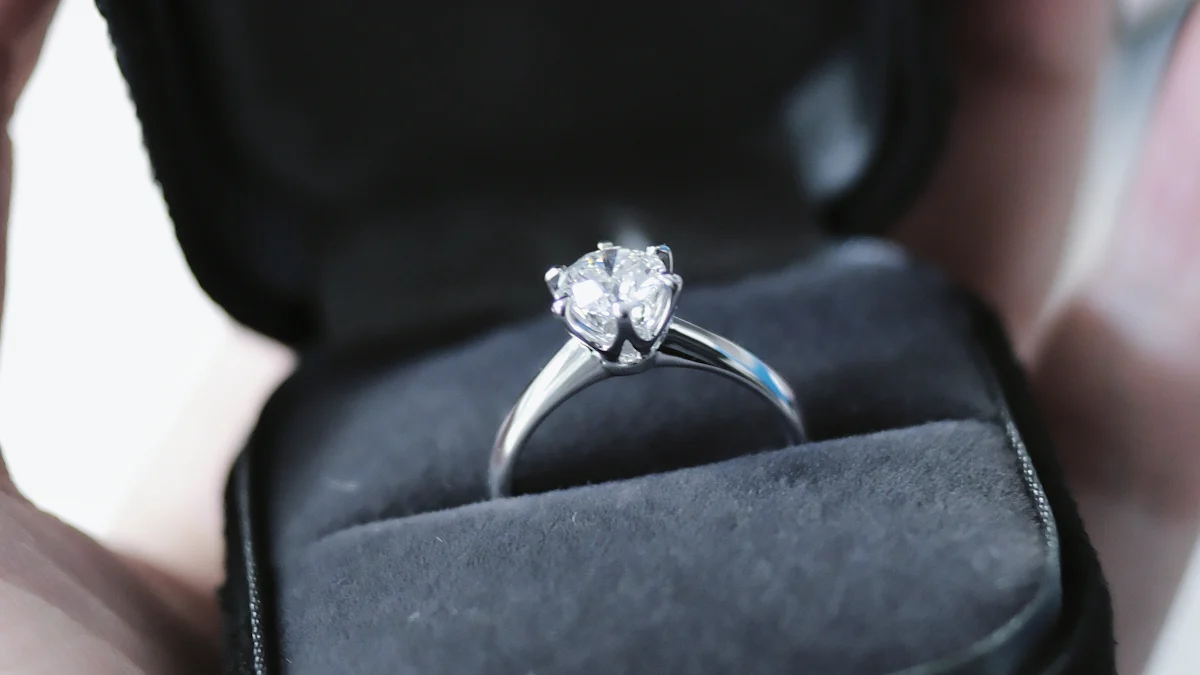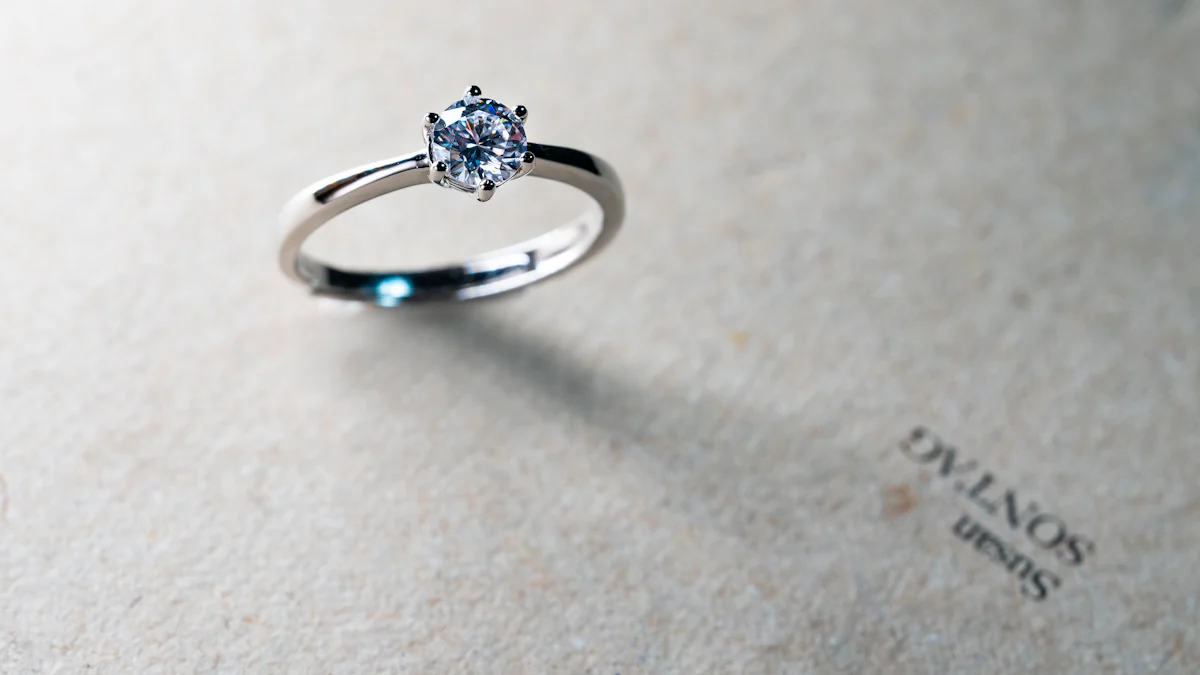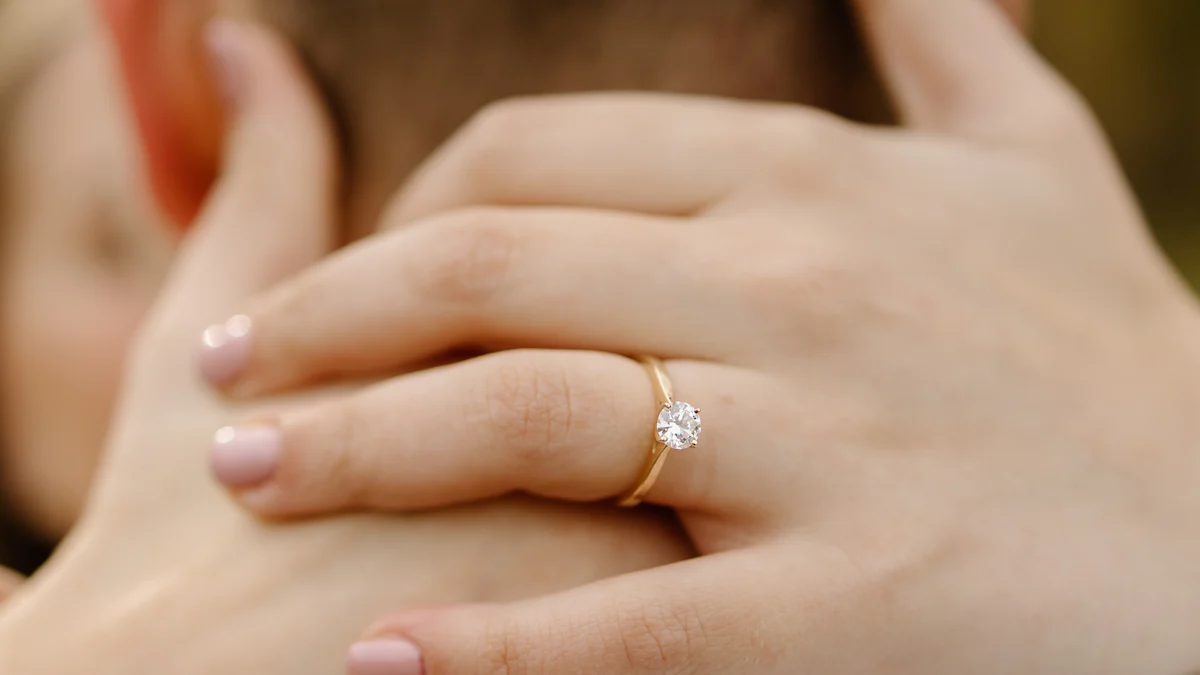Understanding One Carat of Diamond Weight

When you think about diamonds, the term "carat" often comes to mind. But what exactly does it mean? In the world of diamonds, a carat measures weight, not size. One carat of diamond equals 0.20 grams or 200 milligrams. This measurement plays a crucial role in diamond grading. Carat weight significantly impacts a diamond's price, as larger diamonds are rarer and more desirable. However, two diamonds with the same carat weight can differ in cost due to factors like cut, color, and clarity. Understanding carat weight helps you make informed decisions when purchasing diamonds.
Key Takeaways
- Carat weight measures a diamond's weight, not its size; one carat equals 0.20 grams.
- Larger diamonds are rarer and more desirable, which significantly impacts their price.
- Understanding the difference between carat weight and physical size is crucial for informed purchasing decisions.
- The cut of a diamond greatly influences its appearance; a well-cut diamond can look larger and more brilliant.
- Consider the 4Cs—cut, color, clarity, and carat weight—when selecting a diamond to ensure you get the best value.
- Be aware of 'magic numbers' in carat weight, as prices can jump significantly at certain thresholds.
- Consulting a professional jeweler can provide valuable insights and help you make informed choices.
What is One Carat of Diamond?
Definition and Measurement
When you hear about one carat of diamond, it refers to the weight of the diamond. A carat equals 0.200 grams or 200 milligrams. This unit of measurement allows for precise weight determination, as each carat divides into 100 points. This precision helps jewelers and buyers understand the exact weight of a diamond. While many people associate carat with size, it actually measures weight. The physical size of a diamond can vary based on its cut, even if the carat weight remains the same.
Historical Background of Carat Weight
The concept of carat weight has an intriguing history. Early gem traders used carob seeds as counterweights on balance scales due to their uniform size and weight. This practice provided a consistent method for weighing gemstones. The term "carat" itself originates from the Greek word for the carob plant. In 1907, the Fourth General Conference on Weights and Measures standardized the metric carat as 200 milligrams. By 1913, this metric carat became the international standard for measuring gemstones. Today, the carat system remains a universal method for weighing diamonds, ensuring consistency across the globe.
Carat Weight vs. Physical Size

When you consider purchasing a diamond, understanding the difference between carat weight and physical size is crucial. Carat weight measures the diamond's weight, not its size. This distinction often leads to confusion among buyers. A diamond's shape, depth, and symmetry significantly influence its perceived size. For instance, a well-cut diamond may appear larger than a poorly cut one, even if both have the same carat weight.
Understanding Size Perception
The perception of a diamond's size depends on several factors beyond carat weight. The cut of the diamond plays a pivotal role. A diamond with a shallow cut may look larger from the top view, while a deep cut might make it appear smaller. The shape of the diamond also affects size perception. Round diamonds often seem larger than other shapes due to their symmetrical appearance. Additionally, the setting can enhance or diminish the perceived size. A halo setting, for example, can make a diamond look more substantial by surrounding it with smaller stones.
Common Misconceptions About Carat and Size
Many people mistakenly equate carat weight with size. However, an increase in carat weight does not proportionally increase the diamond's size. A one carat of diamond may not look twice as large as a half-carat diamond. This misconception often leads buyers to prioritize carat weight over other essential factors like cut and clarity. It's important to remember that carat weight alone does not determine a diamond's value or appearance. By understanding these nuances, you can make more informed decisions when selecting a diamond.
Carat Weight and Diamond Pricing
When you explore diamond pricing, carat weight plays a pivotal role. You might wonder why this is the case. The answer lies in the rarity and desirability of larger diamonds. As the carat weight increases, the price of the diamond typically rises. This is because larger diamonds are rarer and more sought after.
The Role of Carat in Pricing
Carat weight significantly influences the price of a diamond. You may notice that even a small increase in carat weight can lead to a substantial price jump. This happens because larger diamonds are less common and more desirable. The market values these rare gems highly, making them more expensive.
Expert Testimony:
"Price increases with carat weight because larger stones are more rare and more desirable."
When you consider purchasing a diamond, remember that carat weight is just one of the 4Cs—cut, color, clarity, and carat. Among these, carat is arguably the most well-known. However, it's crucial to balance carat weight with other factors to ensure you get the best value for your investment.
Understanding 'Magic Numbers' in Pricing
In the diamond industry, certain carat weights are known as "magic numbers." These are specific weights where prices tend to jump significantly. For example, diamonds weighing exactly one carat of diamond often command a premium price. This is because many buyers perceive one carat as a benchmark for quality and prestige.
Understanding these magic numbers can help you make informed purchasing decisions. If you're flexible with carat weight, you might find better value just below these thresholds. For instance, a diamond weighing 0.95 carats can appear nearly identical to a one-carat diamond but may cost significantly less.
By understanding the role of carat weight in pricing and the concept of magic numbers, you can navigate the diamond market more effectively. This knowledge empowers you to make choices that align with your budget and preferences.
Carat Weight and Diamond Appearance

When you evaluate a diamond, its appearance often captivates you. The carat weight plays a role, but the cut and setting significantly influence how you perceive the diamond's beauty. Understanding these elements helps you appreciate the full potential of a diamond.
Influence of Cut on Appearance
The cut of a diamond determines its sparkle and brilliance. Jewelers cut diamonds to maximize their light performance, which enhances their visual appeal. A well-cut diamond reflects light beautifully, creating a dazzling effect. This brilliance makes the diamond appear larger and more vibrant, regardless of its carat weight.
Expert Insight:
"Diamonds are cut to maximize sparkle, fire, brilliance, and overall visual beauty. The cut directly impacts the amount of light performance achieved." - With Clarity Blog
When you choose a diamond, consider the cut quality. A superior cut can make a smaller diamond look more impressive than a larger one with a poor cut. The cut's precision affects how light travels through the diamond, influencing its overall appearance.
Impact of Setting on Perceived Size
The setting of a diamond also affects how you perceive its size. Different settings can enhance or diminish the diamond's appearance. For example, a halo setting surrounds the central diamond with smaller stones, making it look more substantial. This setting creates an illusion of a larger diamond, adding to its allure.
Research Highlight:
"Diamond cuts and ring settings play a crucial role in enhancing the beauty and brilliance of the stone, ultimately influencing the overall appearance of the ring." - King of Jewelry Blog
When selecting a diamond, think about how the setting complements the stone. A well-chosen setting can highlight the diamond's best features, enhancing its perceived size and beauty. By understanding the interplay between cut and setting, you can make informed decisions that align with your preferences and budget.
Making Informed Purchasing Decisions
When you decide to purchase a diamond, understanding how to balance carat weight with other factors is crucial. Carat weight is important, but it should not overshadow the other aspects of diamond quality. You need to consider the 4Cs: cut, color, clarity, and carat weight. Each plays a vital role in determining the diamond's overall beauty and value.
Balancing Carat Weight with Other Factors
-
Cut: The cut of a diamond affects its brilliance and sparkle. A well-cut diamond can appear larger and more vibrant, even if it has a smaller carat weight. Prioritize cut quality to enhance the diamond's visual appeal.
-
Color: Diamonds come in various colors, from colorless to shades of yellow or brown. A diamond with a higher color grade will appear more brilliant and valuable. Consider how color interacts with carat weight to achieve the desired look.
-
Clarity: Clarity refers to the presence of inclusions or blemishes in a diamond. A diamond with fewer imperfections will have a higher clarity grade. Balance clarity with carat weight to ensure the diamond looks flawless to the naked eye.
-
Shape: Different diamond shapes can influence how carat weight is perceived. For example, oval or marquise shapes may appear larger than round diamonds of the same carat weight. Choose a shape that complements your style and enhances the diamond's appearance.
Expert Insight:
"Jewelers emphasize the significance of considering carat weight along with other factors like cut, color, and clarity to guide customers effectively."
Tips for Choosing the Right Carat Weight
-
Set a Budget: Determine how much you are willing to spend on a diamond. This will help you narrow down your options and focus on diamonds that fit within your budget.
-
Consider Personal Preference: Think about what matters most to you. Do you prioritize size, sparkle, or color? Your personal preference will guide your decision on the right carat weight.
-
Consult a Professional: Seek advice from a credentialed jeweler. They can provide valuable insights into diamond quality and help you make an informed choice.
-
Use a Diamond Size Chart: A diamond size chart can help you visualize how different carat weights will look. This tool is useful for comparing sizes and finding the best fit for your needs.
-
Evaluate Depth and Shape: Consider the depth and shape of the diamond. These factors can maximize the perceived size without increasing the carat weight.
Professional Advice:
"Consulting a credentialed jeweler for guidance on diamond weight, quality, and value is crucial for making informed decisions."
By balancing carat weight with other factors and following these tips, you can choose a diamond that meets your expectations and fits your budget. Remember, the right diamond is one that aligns with your personal preferences and offers the best combination of the 4Cs.
Summary of Key Points
Recap of Carat Weight Importance
Understanding carat weight is crucial when evaluating diamonds. Carat weight measures the diamond's weight, not its size. This distinction is important because many people mistakenly equate carat with size. A diamond's cut, shape, and setting can significantly influence its perceived size. Larger carat weights often command higher prices due to their rarity and desirability. However, carat weight is just one aspect of a diamond's value. You should also consider the cut, color, and clarity to ensure you choose a diamond that meets your expectations.
Insight:
"Diamond's brilliance is a complex integration of angles and proportions affecting light return. Poor light return from a diamond will lack optimal beauty."
Final Thoughts on Choosing Diamonds
When selecting a diamond, balance carat weight with other factors. Consider the 4Cs—cut, color, clarity, and carat weight. Each plays a vital role in determining the diamond's overall beauty and value. Prioritize what matters most to you, whether it's size, sparkle, or color. Consult a professional jeweler for guidance. They can provide valuable insights into diamond quality and help you make an informed choice. Use tools like a diamond size chart to visualize different carat weights. By understanding these elements, you can choose a diamond that aligns with your preferences and budget.
Understanding carat weight is essential when evaluating diamonds. Carat weight, a key determinant of a diamond's value, measures the diamond's weight, not its size. This distinction is crucial because many people mistakenly equate carat with size. Larger carat weights often command higher prices due to their rarity and desirability. However, carat weight is just one aspect of a diamond's value. You should also consider the cut, color, and clarity to ensure you choose a diamond that meets your expectations.
When selecting a diamond, balance carat weight with other factors. Consider the 4Cs—cut, color, clarity, and carat weight. Each plays a vital role in determining the diamond's overall beauty and value. Prioritize what matters most to you, whether it's size, sparkle, or color. Consult a professional jeweler for guidance. They can provide valuable insights into diamond quality and help you make an informed choice. Use tools like a diamond size chart to visualize different carat weights. By understanding these elements, you can choose a diamond that aligns with your preferences and budget.
FAQ
What is the difference between diamond carat and diamond size?
Diamond carat and diamond size often confuse buyers. Carat refers to the weight of the diamond. Size, however, describes the physical dimensions—height, width, and depth. A diamond's cut can affect its size perception, even if the carat weight remains constant.
How does carat weight impact diamond price?
Carat weight significantly influences a diamond's price. As carat weight increases, so does the price. Even a small increase in carat weight can lead to a noticeable price jump. Larger diamonds are rarer, making them more valuable and desirable.
What is the difference between carat weight and total carat weight?
Carat weight measures the weight of a single diamond, like the center stone in a ring. Total carat weight (TCW) combines the weight of all diamonds in a piece of jewelry. For example, a ring with multiple smaller diamonds will have a TCW that reflects the sum of all stones.
Why do some diamonds with the same carat weight look different in size?
Diamonds with the same carat weight can appear different in size due to their cut. A well-cut diamond may look larger because it reflects light better. The shape and depth also play roles in how large a diamond appears.
Can a diamond's setting affect its perceived size?
Yes, the setting can influence how large a diamond looks. Certain settings, like halo settings, surround the central diamond with smaller stones, creating an illusion of a larger diamond. Choosing the right setting can enhance the diamond's appearance.
Is a higher carat weight always better?
Not necessarily. While higher carat weights are rarer and often more expensive, they aren't always better. You should consider the 4Cs—cut, color, clarity, and carat weight. A well-balanced combination of these factors ensures the best value and beauty.
How can I choose the right carat weight for my budget?
Start by setting a budget. Then, prioritize what matters most to you, whether it's size, sparkle, or color. Consult a professional jeweler for guidance. They can help you find a diamond that fits your budget and meets your preferences.
What are "magic numbers" in diamond pricing?
"Magic numbers" refer to specific carat weights where prices jump significantly. For instance, diamonds weighing exactly one carat often command a premium. Understanding these thresholds can help you find better value just below these weights.
Does carat weight affect a diamond's brilliance?
Carat weight itself doesn't affect brilliance. The cut quality determines how well a diamond reflects light. A superior cut enhances sparkle and brilliance, making the diamond appear more vibrant, regardless of its carat weight.
Should I prioritize carat weight over other factors?
While carat weight is important, it shouldn't overshadow other factors. Consider the 4Cs—cut, color, clarity, and carat weight. Each plays a crucial role in a diamond's overall beauty and value. Balancing these factors ensures you make an informed decision.
See Also
What’s the Price of a 2 Carat Lab Diamond
What Size Does a 2.25 Carat Diamond Have
What’s the Cost of a 3 Carat Lab Diamond

